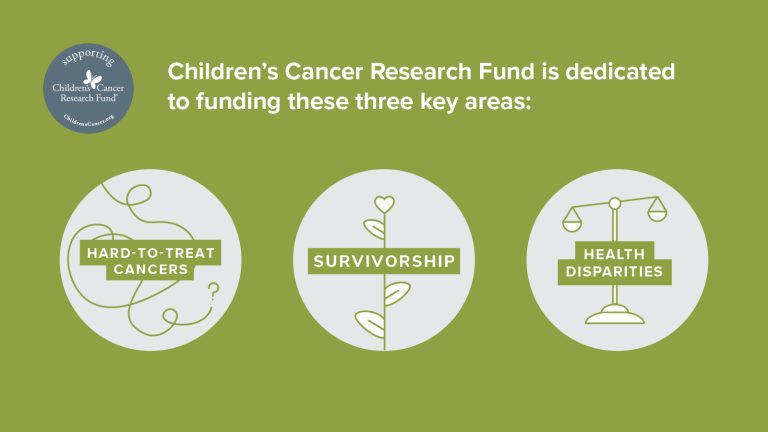Among all childhood cancers, leukemia in infancy is rare and challenging for researchers and doctors tasked with understanding causes and finding more successful treatments. Although only 150 infants are diagnosed with leukemia each year, their prognosis is not very encouraging. While older children who are diagnosed with leukemia have an 80 percent survival rate, the survival rate for infants is less than 50 percent. That’s because the biology of infant leukemia, as well as infants’ response to treatment, is very different from other childhood leukemias. When these young patients are diagnosed, their small bodies are typically overwhelmed with leukemic cells and they are usually quite ill. Sometimes, newly diagnosed infants will receive an exchange transfusion essentially to remove all of their blood and replace it with donor blood, allowing the body a reprieve from the burden of leukemia cells in order to begin the best treatment strategy.
Treatment for infants varies depending on the type of leukemia they have — acute lymphoblastic leukemia (ALL) or acute myeloid leukemia (AML), as well as whether the infant has a specific genetic abnormality involving an MLL gene in their leukemia cells. For some patients, regimens of high-dose chemotherapy have proven successful, while others may need a bone marrow transplant.
Doctors and researchers at the University of Minnesota (U of M) have had a long-standing interest in studying infant leukemia. Dr. John Kersey was the first to publish findings that survival rates differed for infant ALL depending on whether or not there was an MLL gene abnormality in the leukemia cells. Notably, some recent improvements in survival have been made based partly on this discovery, including the use of bone marrow transplant for some infant ALL patients with the MLL gene abnormality.
Unexpected discoveries
Earlier this year, U of M pediatric cancer epidemiologists made another groundbreaking and unexpected discovery. Drs. Julie Ross and Logan Spector led the largest ever genetic study of infant leukemia in the world; more than 300 patients participated. They found two additional genes that are strongly linked to the development of specific types of infant leukemia, including types that are very hard to cure. These genes are critical to blood cell division and growth, important aspects of how leukemia begins and grows in the body.
Collaborative approach
Leaders at the U of M’s Masonic Cancer Center have fostered a highly collaborative environment, which creates a truly unified team approach to curing cancer. As a result, doctors in pediatric hematology/oncology and BMT can take findings from the genetic epidemiology study and begin to design custom treatment plans based on a patient’s individual genetic make-up. They also are working alongside Dr. Ross and her colleagues in epidemiology to determine whether these genes and others may be important in:
- Blood formation in healthy children
- Outcomes in patients with leukemia
- Improved donor cell engraftment in blood and marrow of transplant recipients
- Donor-derived leukemia
Early findings
Importantly, at least one gene identified in the epidemiology study is already linked with significantly poorer outcomes in certain children with leukemia. Further, several additional genes appear to be altered in children with leukemia who relapse. U of M researchers and doctors are now developing preclinical and clinical studies that can target specific genes to improve outcomes for patients with these specific genetic properties.
Looking ahead
This team approach is geared toward improving survival in children with leukemia who initially fail treatment. Further, pursuing these questions could improve our understanding as to why leukemia develops in some children, thereby eventually leading to improved outcomes in pediatric and adult patients.
Help us find better treatments for leukemia
Your donations are funding important research to find less toxic treatment for kids who are diagnosed with childhood leukemia.



